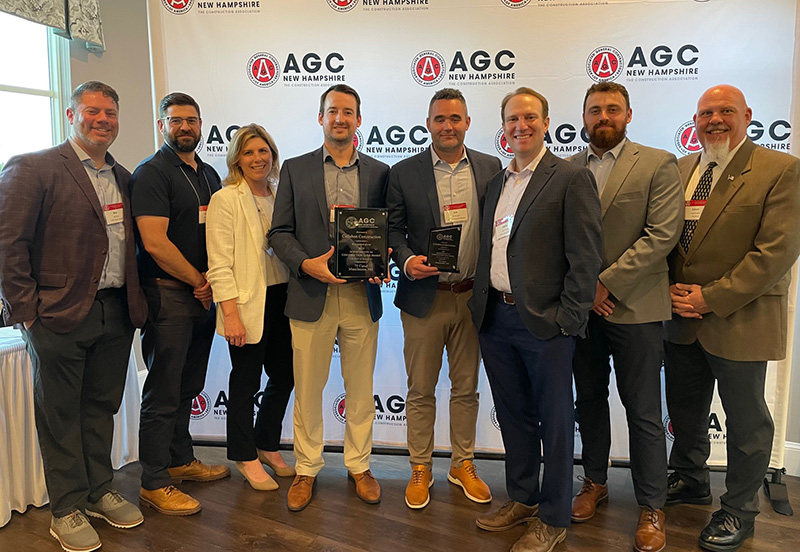Fletcher Tilton building blocks: How to avoid construction litigation - by Adam Ponte - part 7

Fletcher Tilton PC
Seventh in a series of articles about how to avoid construction litigation
Quick Tips for Project Owners Negotiating Construction Agreements
Prior to breaking ground, the project general contractor typically presents the project owner with a construction agreement using form language published by one or more of the (i) American Institute of Architects (AIA), (ii) Design-Build Institute of America (DBIA), and (iii) ConsensusDocs. Owners should pay particular attention to, among the many provisions in these form contracts, the requirements for progress payments, along with the provisions covering lien releases and project milestones. The owner’s construction lawyer should also review and negotiate many other aspects of the construction agreement. However, an owner can avoid needless surprises and other project disputes by requiring the following contract terms.
I. Owner Should Require Pencil Requisition Process.
Whether the construction agreement calls for a stipulated lump-sum or “costs-plus” contract price, there is likely a section dedicated to progress payments due and owing from the project owner to the general contractor. Typically, form contracts require an owner to make monthly progress payments to the general contractor based upon applications for payment that are submitted by the contractor to the project architect. These applications typically identify the percentage completion for various areas of the project, and request payment of an amount commensurate with the percentage completed as of the date of the application. Standard contract provisions, such as those found in the AIA A101-2007, contain language obligating the owner to pay, by month’s end, amounts “certified” by the project architect, so long as the architect receives the payment application within the first week of any given month. This process can often lead to rushed project inspections and payments, which could put the project budget at risk, among other problems.
To protect against such risk, owners should require general contractors to use the “pencil requisition” process as a condition precedent to the submission of formal payment applications and the owner’s subsequent payment. Owners should require contract language obligating the contractor to first submit a draft “pencil” requisition to the project architect within the first week of any given month. The architect then would have, for example, five to seven business days to review the draft requisition and seek revisions if necessary. After architect approval of the draft requisition, the contractor would submit the formal payment application, and the owner thereafter would have, for example, 25-30 business days to remit payment (minus retainage) based upon the amounts certified in the application. By requiring the pencil requisition process, the project architect will have additional time to confirm that the general contractor’s reported percent completion is accurate. Further, this process prevents rushed inspections and payments. By the time the owner receives the approved payment application, said application already has been fully analyzed to ensure that the payment requested is appropriate. Negotiating this relatively straightforward change to any form construction agreement will help owners avoid overpayment on progress payments.
II. Lien Releases Are A Must.
Form construction contracts usually do not describe in great detail any processes related to lien releases to be furnished to the project owner from the general contractor and/or its subcontractors or suppliers. Although that is not the topic of this article, an owner should be vigilant to protect against liens being recorded on the project, especially where lenders could cease financing the project until any such liens are dissolved. Accordingly, owners should seek contract language requiring the general contractor to submit lien releases simultaneously with any application for payment.
To do this, the owner should require that, with each and every payment application, the contractor submit a current lien waiver from the contractor and lien waivers from any applicable subcontractors or suppliers whose work is included with the payment application being submitted. These waivers should: (i) include a representation that all subcontractors and suppliers (including lower-tier subcontractors) have been fully paid to date; and (ii) be executed by authorized representatives of said contractors or suppliers. By requiring the general contractor to furnish lien waivers with any application for payment, the owner can help protect against liens being recorded against the project property.
III. Project Schedule Must Be Explicitly Confirmed.
Project owners and general contractors often glaze over the contract requirements for construction commencement dates and/or dates for substantial completion. It is common to find executed construction agreements that fail to stipulate any actual start date or substantial completion date. To avoid any confusion as to when warranty periods commence, or, perhaps, when certain delay damages may accrue, owners should demand that explicit milestone dates be identified in their construction agreements.
AIA, DBIA or ConsensusDocs agreements usually permit the contracting parties to insert time periods or dates upon which the project starts and finishes. General contractors will frequently insert, instead of a date certain, a buffer period during which a project may start and/or finish. For example, a contractor could request language that the start date will be “within thirty (30) days of its receipt of a building permit” and/or that the substantial completion date will be “the date upon which the project receives a certificate of occupancy.”
Leaving such crucial requirements open-ended can easily lead to disputes concerning project coordination and scheduling. Owners, therefore, should require dates certain on their construction agreements so there is no dispute as to when a project will start and finish.
IV. Conclusion.
When presented with a construction agreement, owners can avoid certain pitfalls and other disputes on a project by negotiating contract terms requiring: (i) the pencil requisition process; (ii) lien waivers contemporaneous with payment applications; and (iii) explicit dates for project milestones. Project owners should, of course, seek counsel from a construction attorney when negotiating construction agreements.
Adam Ponte, Esq. is a litigation attorney at Fletcher Tilton PC Attorneys at Law, Worcester, Mass
Nobis Group awards Robinson and Moreira STEM scholarships

Careers in Construction Month focus on training and safety - by Joe Camilo

The rise of incubators and co-working spaces: The latest in life sciences - by Matt Combs

Ask the Electrician: Is summer a prime time for commercial electrical maintenance?









